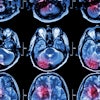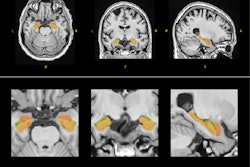AI is revolutionizing the way we deliver healthcare, especially in radiology. More than 30% of radiologists are already incorporating AI into their clinical practices and are optimistic about the value it can bring. However, as the number of AI tools available continues to grow, it's essential for hospitals and healthcare professionals to recognize that not all AI is created equal and must go beyond the algorithm to drive true clinical, operational, and financial impact.
A 2023 analysis published in the British Journal of Radiology revealed that only 20% of AI algorithms improved radiologists’ performance. The value of a radiology AI tool not only hinges on its ability to provide validated, detailed clinical insights, and data -- including localization, quantification, characterization, visualization, and tracking -- but also its ability to effectively address the common obstacles that can impact the quality of patient care.
One of the most glaring and pressing of these is an increasing shortage of radiologists, in addition to the long-standing challenges many rural hospitals have faced in recruiting specialists. Research estimates it costs around half a million dollars to recruit a neuroradiologist -- an extreme cost for any of 53% of hospitals currently facing negative operating margins and only adding to the disparity between comprehensive and rural centers often lacking access to this specific expertise.
Furthermore, while the number of radiologists is declining, the volume of scans continues to increase, with data continuing to show the use of diagnostic imaging skyrocketing, particularly in the emergency department. As a result, medical imaging readers are under more pressure than ever to turn around reads quickly while catching incidentals, and facing critical consequences if diagnoses are missed.
By empowering clinicians to make treatment decisions faster and with more confidence, advanced and validated machine-learning algorithms can both help them overcome the most pressing challenges and also alleviate other bottlenecks below the surface that reduce workflow efficiencies.
To start, the algorithms need to be impactful. For example, by providing clinicians with precise insights into medical images through localization, quantification, and visualization, deep clinical AI has the potential to lift the efficiency of reads and increase productivity while also reducing interreader variability and offering neuroradiology level support in systems overwhelmed by staff shortages or lacking access to more specialized and experienced readers. This ultimately helps give every patient – regardless of their point of entry into the healthcare system -- more equitable access to expert-level care.
 David Stoffel, MD, of RapidAI.
David Stoffel, MD, of RapidAI.
AI tools also need to take friction out of the system, not create unnecessary steps or additional work. To do this, effective deep AI tools must be seamlessly incorporated into radiologists’ workflow by presenting data efficiently and in the context of their existing care practice. This means integrating with PACS, flagging the most urgent and high-priority cases, and aligning with radiologists’ workflows without causing disruption or requiring changes to the way they work.
In addition, in order for AI to fully deliver on its operational promise, it should not just solve challenges for radiologists, but be able to support multidisciplinary cooperation, communication, and team-based decision-making with other members of the clinical care team. ER doctors, interventional neurologists, stroke coordinators, and others should all be able to access this data simultaneously to ensure that information is socialized across the organization or hub-and-spoke network, to expedite decision-making, reduce physician burnout, and enable effective and efficient care coordination.
Finally, AI tools are programs, and they need to be able to be managed accordingly. This means being able to get real-time operational data on key metrics, performance, and impact. This enables hospitals to adjust and optimize in real-time.
On the back end, to support all of these activities, the IT platform needs to be robust. While IT systems themselves need to be flexible enough to support the growing demand for new cutting-edge technology, effective AI tools also need to integrate into the hospitals’ IT infrastructures without disruption. By alleviating workforce challenges, improving diagnostic precision, and facilitating better care coordination, deep clinical AI that goes below the surface and beyond standard triage has the power to be enormously valuable to radiologists, help reduce friction within the healthcare system, and deliver true clinical, operational, and financial value for individual hospitals or entire care networks.
Dr. David Stoffel is chief business officer at RapidAI.
The comments and observations expressed herein are those of the author and do not necessarily reflect the opinions of AuntMinnie.com.



















